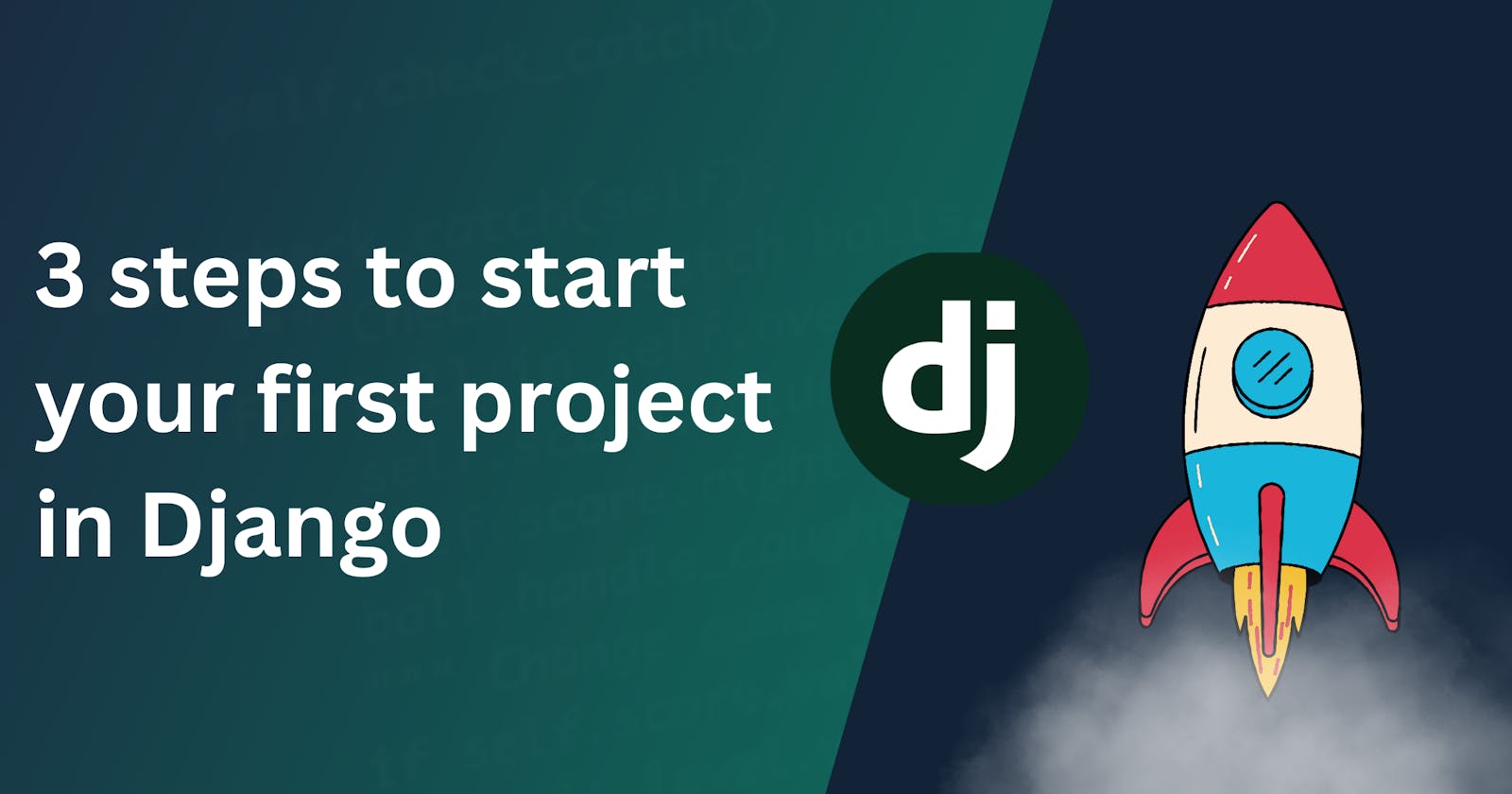A Beginner's Guide to Create Your First Django Project
3 simple steps to prepare your initial Django project
In this comprehensive blog post, I will provide a step-by-step guide on how to set up a new Django project from scratch. We will cover everything from installing the necessary dependencies and creating a virtual environment, to configuring the project settings and running the development server.
Before we begin, please create a parent directory to store all the files. In my case, I will name it myproject.
Now we can start.
The first step is to create a new virtual environment.
Install the virtualenv module:
sudo apt-get install virtualenv
Create a new environment:
cd myproject
virtualenv venv -p 3 # -p -> python version
source venv/bin/activate
After activating the environment, all modules will be installed within it.
Step 2: We will install Django and start a new project.
pip3 install django
django-admin startproject project
Step 3: Use environment variables and configure settings.py.
Install python-dotenv :
pip3 install python-dotenv
Now, create a .env file next to settings.py.
.
└── myproject/
├── venv/
│ └── ...
└── project/
├── project/
│ ├── .env
│ ├── asgi.py
│ ├── __init__.py
│ ├── settings.py
│ ├── urls.py
│ └── wsgi.py
├── manage.py
├── static/
│ └── ...
└── media/
└── ...
Lets create some environment variables:
SECRET_KEY="Your_Secret_Key"
DEBUG=1
ALLOWED_HOSTS=127.0.0.1 # If allowed hostes more than 1 seprate them by ;
DEBLOYED=0
TRUSTED_ORIGINS="Your domians with http/https seperated by ;"
# "https://marwanfazora.com;https://blog.marwanfazora.com"
Now let's configure our settings.py to work both locally and during deployment based on the DEPLOYED variable.
# load environment variables
from dotenv import load_dotenv
import os
load_dotenv()
SECRET_KEY = os.getenv('SECRET_KEY')
# SECURITY WARNING: don't run with debug turned on in production!
DEBUG = bool(int(os.getenv('DEBUG')))
ALLOWED_HOSTS = os.getenv('ALLOWED_HOSTS').split(';')
STATIC_URL = 'static/'
MEDIA_URL = 'media/'
MEDIA_ROOT = 'media/'
if bool(int(os.getenv('DEBLOYED'))):
STATIC_ROOT = 'static/'
CSRF_TRUSTED_ORIGINS = os.getenv('TRUSTED_ORIGINS').split(';')
else:
STATICFILES_DIRS = [
BASE_DIR / "static",
]
Now, configure media and static in urls.py.
from django.conf import settings
from django.conf.urls.static import static
urlpatterns += static(settings.STATIC_URL, document_root=settings.STATIC_ROOT)
urlpatterns += static(settings.MEDIA_URL, document_root=settings.MEDIA_ROOT)urlpatterns += static(settings.STATIC_URL, document_root=settings.STATIC_ROOT)
urlpatterns += static(settings.MEDIA_URL, document_root=settings.MEDIA_ROOT)
Yay! We've successfully completed this step! 😄
Let's run our project!
python3 manage.py runserver

